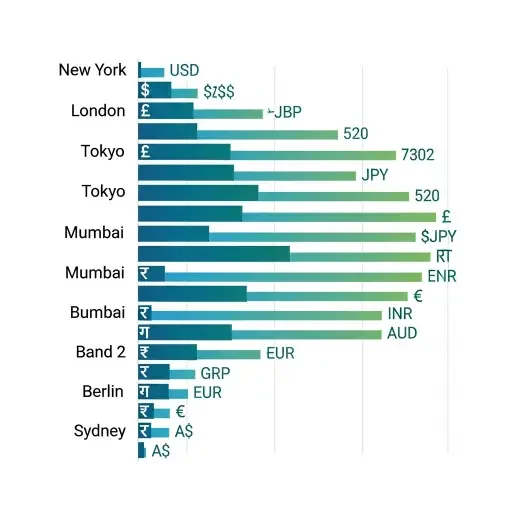The remote-work experiment was supposed to democratize opportunity, not redraw the map of fairness. In boardrooms and mayors’ offices alike, the promise was simple: talent knows no address; work travels through the cloud, not the postal service. Yet as employers rush to codify pay scales for a distributed workforce, they are discovering an inconvenient truth: geography is not a neutral variable. It is a loaded one, carrying legal risk, reputational cost, and a patient, long tail of civil-rights obligations that simple efficiency metrics cannot erase.

The first line of inquiry is legal: do pay differences anchored to location constitute unlawful discrimination? The short answer varies by jurisdiction, but the longer one—where the law is converging—says yes, with caveats. The Equal Pay Act in many places was designed to eliminate wage disparities for the same work performed by men and women. It did not intend to sanction a different pay for the same value brought by different regions. When a software engineer in a high-cost metro makes more than a counterpart in a lower-cost county purely because of location, plaintiffs point toward a new equity case: disparate impact and, in some deployments, a facially neutral policy that disproportionately harms protected classes who cluster geographically.
The policy logic engineers a familiar pattern: cost-of-living adjustments masquerading as performance calibrations. Remote-first companies argue they are pricing labor according to market gradients—rental rates, local demand, regulatory burden. Critics retort that the tool is too blunt: it commodifies workers by where they live, not what they deliver. And that creates a second risk vector: talent and retention costs spike as a consequence of creeping geographicized compensation. If a company insists that a “remote” workforce live where property costs are low, the message lands: your location, not your output, determines your earning trajectory.

The practical outcomes are predictable, though corrosive. Two realities collide: first, people will migrate to where pay is fair, or at least stable. Second, companies will rationalize through policy: “global salaries” versus “localized strategies.” The tension surfaces in the HR office, being debated in arbitration rooms, and peppering investor calls with questions about attrition, productivity, and legal risk. The business case for a location-agnostic salary is not purely altruistic. It is about preserving a scalable culture, avoiding discrimination exposure, and sustaining a talent moat that is not geographically anchored.
But the law and policy are not static. In the United States, recent state directives and evolving EEOC interpretations underscore a growing scrutiny of pay structure discrimination in remote contexts. In Europe, the conversation is even more acute, given strong anti-discrimination traditions and robust employee protections. In both arenas, the civility of business rhetoric—“we compensate by value, not by zip code”—is tested against a transactional reality: pay scales that drift with geography can inadvertently magnify inequity, especially when remote workers sit across lines of wage brackets they did not elect.
This is not simply a compliance problem; it is a governance problem. Boards must demand clarity: what is the company actually rewarding? Is it technical impact, leadership, collaboration, or the mere capacity to live near a cheaper property market? The risk calculus should factor in potential class-action exposure, audit costs, and the strategic fallout of a public misalignment between stated values and pay practices. It is a misalignment that can metastasize into reputational damage, investor skepticism, and painful turnover.
The third axis of this issue is the operational design of remote work itself. If you permit global hiring without a universal pay spine, you magnify localities’ leverage. If you impose a global spine with clear regional modifiers, you risk punitive regressions: gridlines of fairness that, in practice, become new forms of wage capping and talent stratification. The more successful distributed teams are not those that can pretend geography is irrelevant; they are those that translate geography into a transparent, value-forward framework—where pay is anchored in role complexity, impact, and market demand, while cost-of-living adjustments are handled through explicit, auditable policies.
In this frame, the solution space emerges as three pillars:
- Clear, published pay philosophy: a transparent formula tying compensation to role, impact, and market benchmarks, with explicit treatment of cost-of-living and location as one input among many.
- Regular, independent audits: external reviews of pay equity across geographies, functions, and demographics to detect drift before it becomes a lawsuit or a PR incident.
- Accessible appeals and remediation: mechanisms for employees to challenge perceived inequities, with timelines and concrete remedies that preserve trust.
The investor-as-guardian angle is not incidental. Capital allocators increasingly demand governance that couples performance with integrity. A policy that produces predictable deductions in pay by geography invites questions about risk-adjusted returns: is the most resilient company the one that treats talent as a uniform, portable asset, or the one that gamely accepts geographic stratification while promising “merit-based” uplift?
In the end, the market will only reward fairness that is legible. If your compensation map is a tangle of exceptions, it invites misinterpretation, lawsuits, and churn. Yet if you deploy a principled, auditable framework that ties pay to measurable, transferable value—and refuses to permit geography to masquerade as performance—you align with both the law and the ledger.

The remote-work era did not erase distance; it reframed it. The new distance is not between city and suburb, but between principle and practice. Employers who adapt—who articulate a spine for compensation, calibrate it against transparent benchmarks, and fix the gaps through ongoing governance—will survive the governance gauntlet. Those who pretend that geography is a neutral dial will discover that the law, the market, and human fairness all converge on one verdict: equal pay for equal work, wherever you work from, is not optional—it is essential.
Sources
Legal analyses, civil-rights scholarship, employer policy case studies, and recent state and federal guidance on remote-work compensation.